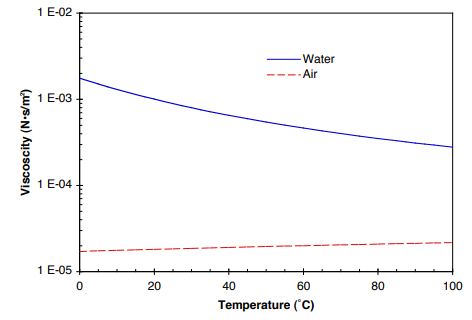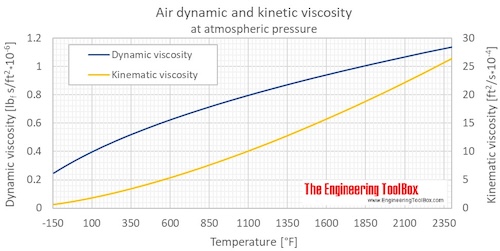

The viscosity of a fluid is a measure of its resistance to gradual deformation by shear stress or tensile stress. Just as heat flows from high temperature to low temperature and mass flows from high density to low density, momentum flows from high velocity to low velocity.Viscosity is an important fluid property when analyzing liquid behavior and fluid motion near solid boundaries. The analogy with heat and mass transfer can be made explicit. Per Newton's law of viscosity, this momentum flow occurs across a velocity gradient, and the magnitude of the corresponding momentum flux is determined by the viscosity. In the Couette flow, a fluid is trapped between two infinitely large plates, one fixed and one in parallel motion at constant speed u direction from one fluid layer to the next.

Although it applies to general flows, it is easy to visualize and define in a simple shearing flow, such as a planar Couette flow.

Viscosity is the material property which relates the viscous stresses in a material to the rate of change of a deformation (the strain rate). For instance, in a fluid such as water the stresses which arise from shearing the fluid do not depend on the distance the fluid has been sheared rather, they depend on how quickly the shearing occurs. In other materials, stresses are present which can be attributed to the rate of change of the deformation over time. Stresses which can be attributed to the deformation of a material from some rest state are called elastic stresses. For instance, if the material were a simple spring, the answer would be given by Hooke's law, which says that the force experienced by a spring is proportional to the distance displaced from equilibrium. In materials science and engineering, one is often interested in understanding the forces, or stresses, involved in the deformation of a material. In a general parallel flow, the shear stress is proportional to the gradient of the velocity. The word 'viscosity' is derived from the Latin ' viscum', meaning mistletoe and also a viscous glue made from mistletoe berries. A fluid with a relatively high viscosity, such as pitch, may appear to be a solid. Otherwise, the second law of thermodynamics requires all fluids to have positive viscosity such fluids are technically said to be viscous or viscid. Zero viscosity is observed only at very low temperatures in superfluids. This is because a force is required to overcome the friction between the layers of the fluid which are in relative motion: the strength of this force is proportional to the viscosity.Ī fluid that has no resistance to shear stress is known as an ideal or inviscid fluid. In such a case, experiments show that some stress (such as a pressure difference between the two ends of the tube) is needed to sustain the flow through the tube. For instance, when a fluid is forced through a tube, it flows more quickly near the tube's axis than near its walls. Viscosity can be conceptualized as quantifying the frictional force that arises between adjacent layers of fluid that are in relative motion.

For liquids, it corresponds to the informal concept of 'thickness': for example, syrup has a higher viscosity than water. The viscosity of a fluid is a measure of its resistance to deformation at a given rate.


 0 kommentar(er)
0 kommentar(er)
